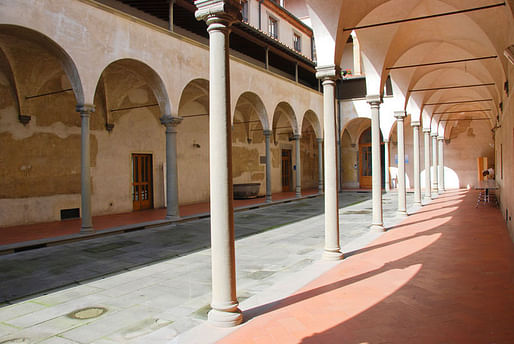

The idea of death and dying is a rather bleak subject. Many avoid discussion of the matter at all costs, while others plan to prolong its advancement as years pass. However, regardless of one's preconceived notions, death is a necessary part of life. Yet, perhaps our relationship and understanding of death can be changed with the help of architecture. Alison Killing, of Killing Architects, explains that "where we die is a key part of how we die." Her work as an architect and urban designer has allowed her to explore the notion of death and how architecture and urban strategy can help the general public understand the relationship between death and architecture.
In 2014, Killing spearheaded a project for the Venice Architecture Biennale called Death in Venice. Through the project, she dissected the architectural timeline of hospitals, hospices, cemeteries, and crematoriums to highlight how space is allocated for death and dying. Through these spaces a dialogue is created showing how these structures shape the way individuals interpret death. During the 20th century, death changed. The life expectancy of humans has increased over time thanks to modern medicine. However, with the evolution of such medical progress came the construction of hospitals.
These large, centralized buildings are where individuals can be placed and treated as they grapple around their health needs. Yet, when the word hospital comes to mind, many think of long endless hallways where doctors and nurses rush to a fro. The dull, cold waiting rooms that house hospital visitors and patients waiting to be treated is an all too familiar image. This is the image many affiliate with hospitals, subsequently death. However, let us think of Brunelleschi, and the Hospital of the Innocent. Killing uses this historical structure as a keystone for her project. She explains in her well-known TED Talk that hospitals weren't always these cold and dreary places. She highlights Brunelleschi and his ambition towards the hospital's construction. On its own, it's marked as a beautiful piece of historical architecture. The courtyards and open corridors allow for natural light and air to pass. Rooms are large with high ceilings to allow for individuals to feel more comfortable.
Hospital architecture often renders a bad reputation. Killing states such a space is often disregarded as a potential place of beauty. "Somehow we've forgotten that that's even possible for a hospital. Now if we want better buildings for dying, we have to talk about it. But because we find the subject of death uncomfortable, we don't talk about it and we don't question how we as a society approach death." As lifespans have extended, the public's approach to death has changed. An aspect of death many lack is a sense of familiarity. Before the advances of modern medicine, people used to die at home, surrounded by those who knew them and loved them. Yet, with the progression of hospitals and medicine, people's relationship with death has been cloaked.
Currently, those reading may find this particular article rather stark. However, this feeling is the exact perspective Killing expands on in her exhibition and talk. During the exhibition in Venice the architect noticed how individuals reacted throughout the space. Using London as a case study location, Death in Venice explores how space within the city is designated towards death. Hospitals specifically, act as mini-cities, with floors and departments housing and servicing specific functions. Cemeteries and other places where the dead are kept are no exception to the amount of space designated for them.
Killing states, "Actually, I would question whether there is one way that you're supposed to act around death and if there's not, I'd ask you to think about what a good death is. What you think architecture that supports a good death might be like?" Could this change in perspective allow for the general public to view space for death the way Brunelleschi did? Architects have a hand in how this relationship and familiarity with death can be changed. Attitudes can be changeable. People are more open to changing things if given the opportunity and platform to talk about them.
In her recent interview with Forbes, she sits down and discusses how the exhibition and her research has invited others to view the relationship between death and architecture.
No Comments
Block this user
Are you sure you want to block this user and hide all related comments throughout the site?
Archinect
This is your first comment on Archinect. Your comment will be visible once approved.